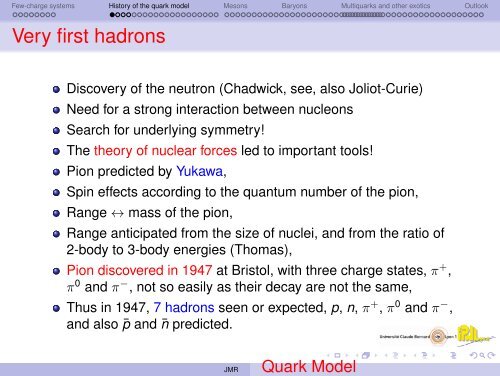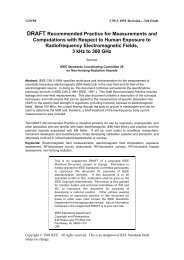An introduction to the quark model
An introduction to the quark model
An introduction to the quark model
You also want an ePaper? Increase the reach of your titles
YUMPU automatically turns print PDFs into web optimized ePapers that Google loves.
Few-charge systems His<strong>to</strong>ry of <strong>the</strong> <strong>quark</strong> <strong>model</strong> Mesons Baryons Multi<strong>quark</strong>s and o<strong>the</strong>r exotics Outlook<br />
Very first hadrons<br />
Discovery of <strong>the</strong> neutron (Chadwick, see, also Joliot-Curie)<br />
Need for a strong interaction between nucleons<br />
Search for underlying symmetry!<br />
The <strong>the</strong>ory of nuclear forces led <strong>to</strong> important <strong>to</strong>ols!<br />
Pion predicted by Yukawa,<br />
Spin effects according <strong>to</strong> <strong>the</strong> quantum number of <strong>the</strong> pion,<br />
Range ↔ mass of <strong>the</strong> pion,<br />
Range anticipated from <strong>the</strong> size of nuclei, and from <strong>the</strong> ratio of<br />
2-body <strong>to</strong> 3-body energies (Thomas),<br />
Pion discovered in 1947 at Bris<strong>to</strong>l, with three charge states, π + ,<br />
π 0 and π − , not so easily as <strong>the</strong>ir decay are not <strong>the</strong> same,<br />
Thus in 1947, 7 hadrons seen or expected, p, n, π + , π 0 and π − ,<br />
and also ¯p and ¯n predicted.<br />
JMR Quark Model

















